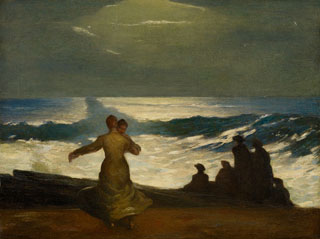IF JAMES J. HILL OR T. B. WALKER, the great art-collecting Minnesotans of the late nineteenth and early twentieth centuries, could cross the chasm of time to view the state of art collecting in Minnesota in the twenty-first century, they would be reassured. They would also be surprised to see how a pursuit that was mostly limited to the scions of wealth and captains of industry in their era has been taken up today by a passionate group of individuals spread over a wide range of occupations and socioeconomic levels. Regardless, both men would recognize and find affiliation with the spirit that guides and drives many of the lenders to this exhibition: a love for art; the thrill of its pursuit; and the pleasure derived from sharing their passion with others.
In contrast to Hill and Walker, who displayed their collections in state-of-the-art galleries, the lenders to this exhibition live with their art on a more intimate scale, incorporating it into the very fabric of their daily lives, in every area of their homes. Bringing together the best from each of these homes allows us to glimpse the fruits of each collector's labors, collectively presented under ideal conditions and within their art-historical context.
Many of the collectors represented in Noble Dreams & Simple Pleasures have found an aspect of American art from the nineteenth and early twentieth centuries that forms the whole, or at least the core, of their collections (e.g., Folk Art, Hudson River School, American Impressionism, or Minnesota Painters). Regardless of whether a collection focus is narrow or broad, certain factors determine the acquisition of a new work. Most obviously, an object must possess an overarching aesthetic combination (i.e., color, composition, paint application, and condition). Beyond this, a visceral reaction can be the ultimate, decisive factor for some. Other collectors, however, can be more pragmatic or cerebral in their approach. Some may want their collections to reflect the depth of an artistic movement or school and refuse to rest until key works by their preferred artists have been secured. Additionally, some collectors are fascinated by all stages of an artist's career and collect his or her works in depth, rather than limiting their purchases to a phase of work the market declares most desirable.
How would modern-day Minnesota collectors define themselves? First, many would be reluctant to identify themselves as "collectors." The very word carries a weight engendered by a burden of assumptions, not the least of which is that one must be rich and in possession of rarified knowledge about the artists, their schools, and the context surrounding their artistic production. In fact, the process generally works in reverse. It is the object that creates the thirst for knowledge about the work, its creation, its creator, and its historical context. Consequently, visits to historical societies to scour documents for tidbits of information, or pilgrimages to an artist's home, favorite haunts, or the actual site depicted in a painting, are not uncommon. Somewhere in the midst of these preoccupations, they become aware that they have—unwittingly—become collectors.
Just as a collector is committed to the chase, he or she is committed to each object's welfare. Accordingly, being a collector requires stewardship that ensures the safety and physical stability (e.g., regulating exposures to light, heat, and humidity) of the works possessed. Thus, while collectors are proprietary about their collections, they all fully realize that they are just one link in a chain of custodians who have passed these works on through time to the next generation of caretakers. In this sense, collectors are "owned" by the works they have so closely guarded and shepherded through time.
Finally, all of the collectors represented in Noble Dreams & Simple Pleasures possess two traits that have compelled them to participate in such a generous manner: a passion to share with others those objects that have so significantly enriched their lives and environments, and an overriding desire to share the richness and complexity of the American story conveyed through the most eloquent means possible. In effect, this visual feast is their gift to us.



